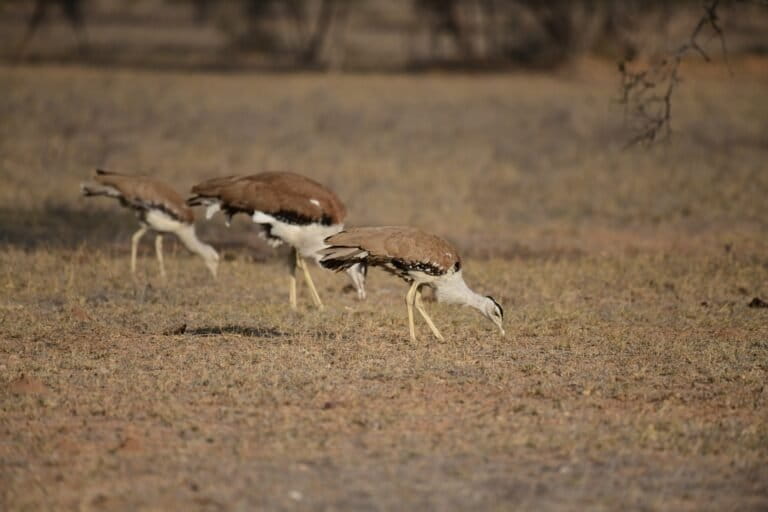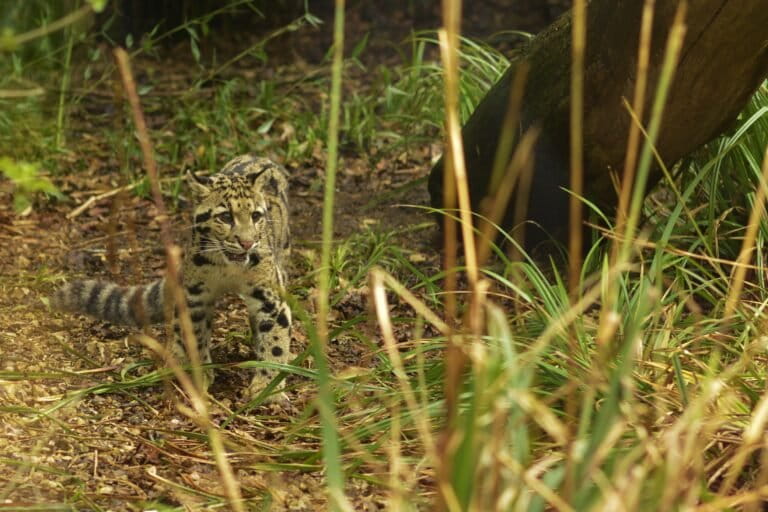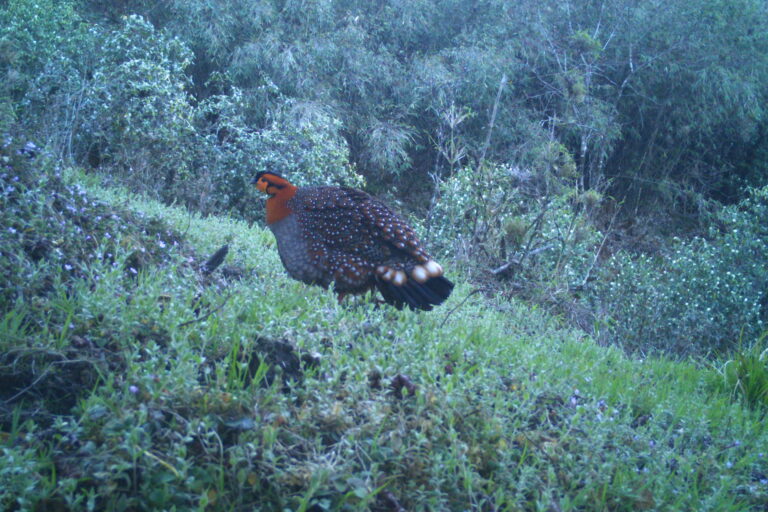- Brought to Wayanad for shade in the mid-80s, the invasive alien tree Senna spectabilis sneaked into Wayanad Wildlife Sanctuary and established itself over a large part of it in a few decades.
- Senna has spread across various protected areas in the Western and Eastern Ghats in three south Indian states, leading to a decline in native biodiversity.
- Various attempts are underway to manage the further spread of Senna through methods varying from cutting and debarking to chemical treatments.
In 1986, the Kerala forest department took a decision that they would come to regret decades later. The social forestry wing of the department raised a few saplings, planted them in the forest office compound in the Wayanad Wildlife Sanctuary and by the side of the roads at Muthanga and Tholpetty areas in the Wayanad district, as shade trees. Little did they know that the trees they were nurturing were one of the worst invasive trees of tropical American origin. The tree had a notorious background of colonising many continents including parts of Asia, Africa and Australia.
By the time they came to realise the mistake, Senna spectabilis had done what every successful invasive plant would do; it had piggy-backed on mammals such as spotted deer and had sneaked into many parts of the sanctuary, invading a good part of it within a few decades. Senna or golden shower tree, as it is popularly called, owing to its bright yellow flowers, was recognised as an invasive by the Kerala forest department only in 2011 – 25 years after it was first planted in Wayanad.
In the early 2000s, Karnataka followed suit with the forest department actively promoting Senna, even planting the saplings in Bandipur and Nagarahole Tiger Reserves as a replacement for Lantana camara, another notoriously invasive plant that the protected areas across the country are fighting to contain. “They thought the new evergreen, fast-growing plant would be an ideal replacement for Lantana when it is removed,” G. Ravikanth, a senior fellow at Ashoka Trust for Research in Ecology and the Environment (ATREE) in Bengaluru said.
Invasion of Senna in South India
Senna spectabilis has now spread exponentially in those protected areas of Karnataka and has also made inroads into other forests in the state such as Male Mahadeshwara Hills (MM Hills) and Biligiriranga Hills (BR Hills).

In an earlier interaction with scientist Raman Sukumar, in 2020, he pointed to a thicket of canopy Senna trees bearing bright yellow flowers outside his research centre near Mudumalai National Park and said that its bioinvasion is an emerging problem in Tamil Nadu’s protected areas. Anecdotal evidence points to its spread in other protected areas of southern India too, such as the Bhadra Tiger Reserve in Karnataka, Periyar Tiger Reserve in Kerala and Meghamalai Tiger Reserve and Coimbatore Forest Division in Tamil Nadu.
Senna is no longer a Wayanad problem. It is now a problem across the three south Indian states of Kerala, Tamil Nadu and Karnataka.
Except for a few observations in Assam, largely restricted to orchards, gardens and farms, Senna invasion has not been reported from other parts of the country, according to researcher Ninad Mungi, one of the authors of the IPBES (Intergovernmental Platform on Biodiversity and Ecosystem Services) assessment of invasive alien species.
P.A. Vinayan, researcher and president of Ferns Nature Conservation Society who has done multiple mapping of the spread, vegetation sampling and the abundance of the species in Wayanad Wildlife Sanctuary since 2012, told Mongabay-India that while the spread of Senna was less than 16 km² in 2013-2014 and 89 km² in 2019, it now stands at 123.86 km². That’s almost an 800% increase in its spread in a decade. Considering the total area of the sanctuary is 344.44 km², Senna has covered 35% of it already.

The wildlife warden of the sanctuary Dinesh Kumar shared that the Senna spread is mostly concentrated in the Tholpetty and Muthanga ranges of the sanctuary. Of the 123.86 km² of invaded area, around 15 -18 km² area reports dense invasion while the rest are in the medium, low and scattered range. Kumar correlates the rapid growth of Senna in the sanctuary after 2012 to the flowering of bamboo in the forest. Like a true invasive, Senna took the space left open by the flowered and withered bamboo. “One observation is that bamboo hasn’t come back with the same vigour as before. Senna has almost pushed it out,” said researcher Anoop N.R. of ATREE who has been studying the growth and spread of Senna in Wayanad.
Wild herbivores propagate the seeds
In a study done in 2021 by Anoop, Vinayan and others, the Asian elephant was found to be a major propagator of Senna seeds with its dung facilitating the germination of seeds. In a scat study of seven mammals, the researchers found around 2000 seeds in a single dung pile of an elephant, according to Vinayan. Apart from elephants, chital and Indian crested porcupine were the other mammals found to be propagating Senna. The study also warns that the fruiting of Senna trees in summer coincides with high elephant density in Wayanad because of the influx of elephants toward this region during summer from other parts of the Nilgiri Biosphere Reserve. This could facilitate faster spread of the invasive in the landscape, especially in the micro-habitats of elephants including riparian forests and swamps.
An aggressive invasive, Senna has certain physical attributes that help it grow and spread exponentially in a short timeframe such as a fast growth rate, short life cycle, large seed stock, thick canopy cover, lack of natural enemies, and coppicing power or the capability to propagate from stems or roots. “The seed production of the adult tree is enormous. One tree has over 1000 seed pods with each pod carrying over 1000 seeds. That’s more than a lakh seeds from one tree,” Vinayan said.

Meera Chandran of the conservation non-profit Forest First Samithi in Wayanad, who is involved in a project to uproot Senna from certain parts of the sanctuary, said the roots of the adult trees are long – some about 40 feet – but go lateral, a few inches below the soil. Since the roots do not go very deep, it is easy to uproot the tree fully, she stated. Senna is also infamous for its coppicing ability where a cut end of the tree allows multiple small shoots to grow from it.
A previous study has shown that Senna exhibits allelopathic properties, too, which is the ability of one plant to influence the germination, development and/or growth of other plants by releasing certain substances (allelochemicals) directly to the target plant or indirectly to the surrounding soil. Vinayan said that the leaves the plant shed decompose and change the chemical composition of the soil, rendering it unsuitable for the growth of other plant species. Ravikanth, however, said that in Nagarahole, certain grass has been growing beneath Senna. Another observation is that other plants do not grow wherever the thick canopy cover of the tree hinders the passage of sunlight.
Senna invasion affects the biodiversity of forests
Studies have shown that biodiversity is disproportionately affected by the spread of invasives in a forest. Vinayan said that he has documented the loss of biodiversity in Wayanad Wildlife Sanctuary due to Senna in a report that will be published soon. According to Anoop, butterflies need specific host plants to lay their eggs which are missing in regions invaded by Senna. Certain native mammals may be dispersing the seeds, but they are not found to eat Senna leaves, he said. “Some may nibble on very tender leaves, but they get no nutrition out of it,” he said. Senna also hampers the growth of native species that are fodder for herbivores. Anoop said that Senna also affects the livelihood of tribal people who depend on non-timber forest produce (amla or gooseberry, for example) for sustenance. Many edible berries, mushrooms and wild tubers, grown in the forest that played a big part in fulfilling the nutritional requirements of tribal people who harvested them, are all slowly disappearing from the forest.

In a report accessed by Mongabay India on the spread and management of Senna in Wayanad Wildlife Sanctuary prepared by the Kerala Forests and Wildlife Department and Ferns Nature Conservation Society, many attempts made by the Kerala Forest Department to manage the growth of Senna through physical and chemical methods have been mentioned. In 2013, the department tried to control its spread by girdling (cutting through the bark all the way around a tree or branch) and applying kerosene in the debarked area of 19,500 trees. Later, when a team of experts from Wildlife Trust of India assessed it, only a very small percentage of trees had died completely after eight months of the management measure. The study also reported a high number of coppice shoots sprouting from the trees that were debarked. Though the girdling method continued in the following years, it was counterproductive as huge amounts of seeds in the soil started regenerating and multiple coppice shoots also started growing from each tree, the report says.
Rapid spread demands immediate action
Meera Chandran told Mongabay India that the Forest First Samithi that she is part of, is working on ecorestoration work at the Tholpetty range of the sanctuary. Of the 1.3 km² where ecorestoration has been done, Senna trees have been removed completely from 0.6 km² using the uprooting method where the entire tree is manually and mechanically uprooted. Once the uprooting is done, in four months or so, grass and other native shrubs will regenerate in the areas where Senna has been uprooted.
While Chandran endorses this method as foolproof, Vinayan said that uprooting large Senna trees en masse could disturb the soil and could lead to erosion since Wayanad is a hilly area with high rainfall. He said debarking is a better method which has been taken up by the forest department under the Rebuild Kerala programme. In both cases, the local tribal population has been involved in the removal of Senna.
However, Chandran bats for the uprooting method, stating that after uprooting the native grass, regeneration provides better fodder availability for wildlife. Additionally, with complete uprooting, the revival of native flora is faster and the use of handheld tools enable the uprooting of root parts with less soil disturbance. She shared with Mongabay India that coppiccing is demonstrated in trees after debarking.

Management attempts are underway in Bandipur and Nagarahole Tiger Reserves, too by the Karnataka Forest Department. In MM Hills where ATREE works on using Lantana stalks to make furniture, Senna too is being used. Ravikanth said he is looking forward to policy changes that would legitimise the removal of Senna from the forest area and marketing it outside, so the local community could be enthused to clear the forest of the invasive. Senna is excellent timber to make lightweight furniture and other wooden products. If the wood could be marketed outside the forest, its management could get easier and faster, Ravikanth said.
From his observation and study of Senna’s growth in the Wayanad Wildlife Sanctuary, Vinayan said he fears that if urgent action is not taken to contain its spread soon, Senna will cover the entire sanctuary, very densely, in the next 10-15 years. He hopes the forest departments across the three states will come up with a comprehensive plan for its eradication without delay.
Editor’s note: The story was updated on November 13 with some expert quotes to reflect a more comprehensive picture of the tree removal methods.
Banner image: Bright yellow flowers and thick green canopy make the invasive Senna tree attractive. Photo by P.A. Vinayan.














